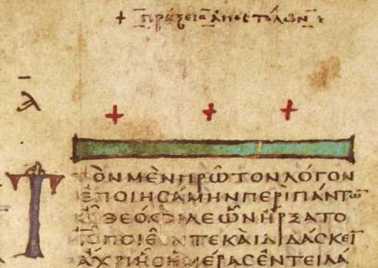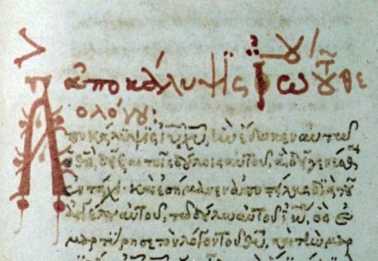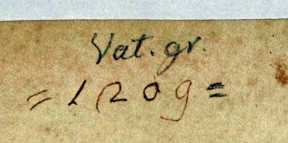
Codex Vaticanus Graece 1209, B/03
General description of the codex:

Codex Vaticanus Graece 1209, B/03
General description of the codex:
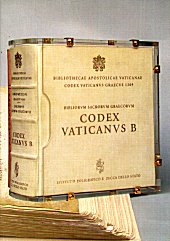



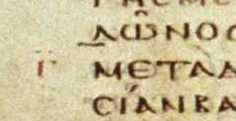
 The Gospels have no other system than the above small uncials. From Acts on there is another system of divisions. Compared to the above these Greek numbers are rather large and not pure uncial (Skeat: semi-cursive).
The Gospels have no other system than the above small uncials. From Acts on there is another system of divisions. Compared to the above these Greek numbers are rather large and not pure uncial (Skeat: semi-cursive). 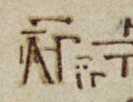 The reinforcer was obviously anxious to preserve both systems and he rewrote the small numbers next to the large ones in a good uncial style which resembles the original small numbers. Since there was a need to reinforce these large section numbers they can not be placed too near in time to the time of the reinforcement. Some time for fading must be allowed. I would say 7th or 8th CE seems reasonable.
The reinforcer was obviously anxious to preserve both systems and he rewrote the small numbers next to the large ones in a good uncial style which resembles the original small numbers. Since there was a need to reinforce these large section numbers they can not be placed too near in time to the time of the reinforcement. Some time for fading must be allowed. I would say 7th or 8th CE seems reasonable.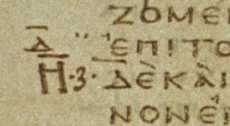 An interesting example of section numbers:
An interesting example of section numbers: 
 Old Alexandrian labels: All the way through Acts and the Catholics are old faded signs, which indicated special text passages. The first one appears on p. 1388. The following signs are used:
Old Alexandrian labels: All the way through Acts and the Catholics are old faded signs, which indicated special text passages. The first one appears on p. 1388. The following signs are used:

|
My pet theory: I think that it is possible the the codex has been washed off to create a palimpsest. That a codex ink is fading throughout so strongly is quite exceptional. I think it is possible that at some point someone decided to wash off the ink to create 'recycled' blank parchment. For some reason it was decided later to keep the text and codex and someone had to retrace everything. Well, just my private speculation ... |
